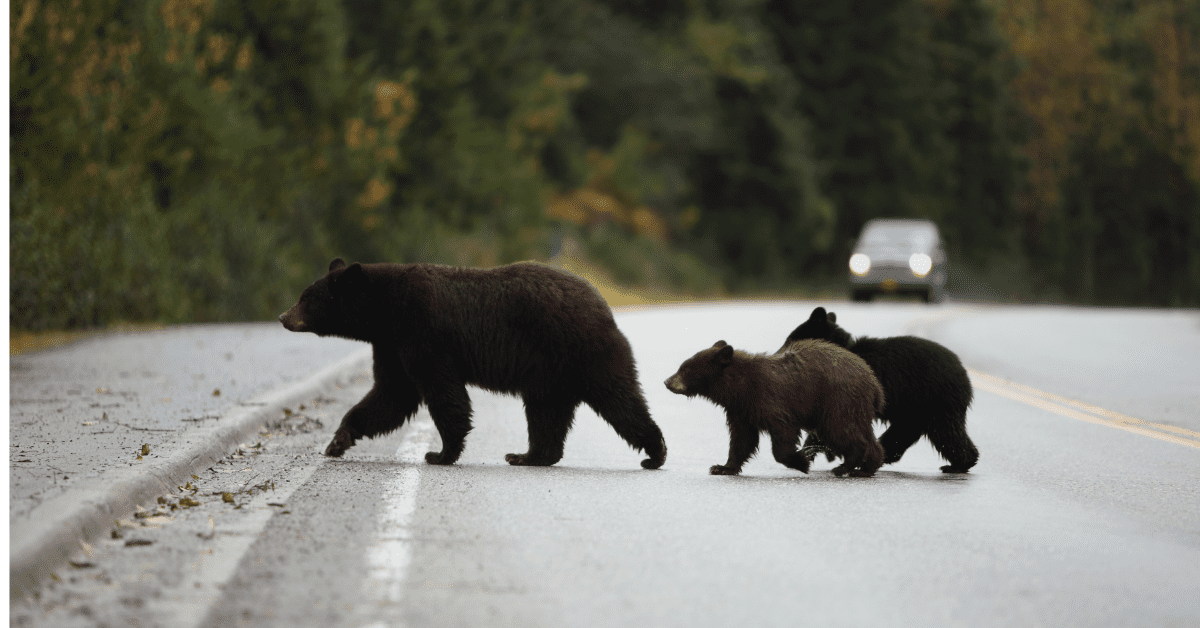
Virginia Passes Second Bill to Protect Wildlife Corridors
The Virginia General Assembly yesterday passed critical legislation to protect wildlife corridors and help keep drivers safer. This bill, SB 1274, builds on the wildlife corridor legislation that passed last year, creating a comprehensive program to identify wildlife corridors, protect motorists from collisions with animals, and address barriers to wildlife movement.
The bill passed with strong bipartisan support.
SB 1274 directs key agencies to incorporate wildlife corridors and road crossings into their planning across Virginia. This legislation builds on the successful wildlife corridor legislation passed last year which directed the Commonwealth to produce a Wildlife Corridor Action Plan (WCAP) to identify important wildlife corridors and road crossings. This legislation directs the departments of Conservation and Recreation, Transportation, and the State Forester to integrate the recommendations of the WCAP into their own planning documents.
Legislation Reflects the Commonwealth Leadership in Safeguarding Wildlife and Drivers
Virginia’s wildlife corridor legislation comes at an important time, as wildlife-vehicle collisions are an increasingly costly and dangerous impediment to the Commonwealth’s motorists. More than 60,000 deer-related crashes occur within the state each year, costing approximately $533 million in damages annually. Virginia ranks 12th in the United States for deer-related car crashes, experiencing 10,000 serious human injuries and 200 fatalities due to wildlife-vehicle collisions every year. Protecting wildlife corridors and improving habitat connectivity by planning for wildlife crossings has led to a 98% reduction in wildlife-vehicle collisions at a study site in Virginia.
“This year’s effort is to help agencies to plan around the requirements of the statewide wildlife corridor plan that will be released this fall,” said Senator Marsden (D-Fairfax). “Once in place these corridors will protect our wildlife by helping keep them off highways, as well as protect human life. This bill does many good things.”
Additionally, designated wildlife corridors present a key tool necessary to complement strategies outlined in the Commonwealth’s conservation strategies. Identifying and protecting wildlife corridors will complement this strategic approach by integrating wildlife connectivity into the protection of this land.
“Virginia has the third-largest state-maintained highway system in the country with over 57,867 miles of roads. These roads are dangerous for wildlife and for the drivers who travel on them. SB1274 will help ensure that VDOT plans for safe wildlife passage in this growing road system,” said Misty Boos, executive director of Wild Virginia.
“Through this comprehensive policy measure, Virginia has an opportunity to ensure that game and nongame wildlife have a fighting chance to migrate and to move safely between suitable habitats in order to minimize risks to their own lives as well as those of Virginians. I call this a win-win situation,” said Pat Calvert, senior policy and campaigns manager at Virginia Conservation Network.
“Protecting wildlife corridors and road crossings will not only keep people and animals safer on our highways, but it will also allow us to enjoy abundant wildlife populations for generations to come,” said Susan Holmes, Policy Director at Wildlands Network. “We thank Senator Marsden and the Commonwealth of Virginia for their leadership to support wildlife and safety.”
Protecting wildlife corridors will also benefit Virginia’s economy. The outdoor recreation industry generates $1.2 billion in state and local tax revenue in Virginia each year, driven in part by activities dependent on healthy wildlife populations, such as fishing, birdwatching and hunting. Enhancing habitat for native wildlife through wildlife corridors will help sustain the state’s natural resources that are central to the 197,000 jobs and $6.5 billion in wage and salaries generated by outdoor recreation in Virginia.
“As temperature and precipitation patterns shift as a result of climate change, wildlife is being driven to higher altitudes and higher latitudes to find adequate food, water and shelter. Protecting wildlife corridors allows for the continued free movement of species to meet their future needs. We applaud Senator Marsden for his ongoing commitment towards identifying corridors in Virginia and incorporating their protection into statewide planning processes,” said Zachary Sheldon, Government Relations Associate with The Nature Conservancy in Virginia.
“The Piedmont Environmental Council is excited about this important step to strengthen Virginia’s Wildlife Corridor Action Plan. This level of cooperation between agencies will reduce incidents between vehicles and animals by identifying opportunities for habitat connectivity throughout the commonwealth, and will also enhance our work addressing barriers to movement for aquatic species, such as dams and undersized culverts,” said Celia Vuocolo, Habitat and Stewardship Specialist at Piedmont Environmental Council.
“The Wildlife Corridor Action Plan provides Virginia with a framework to better connect habitat and migratory pathways for fish and wildlife species,” said Jamie Brunkow, James Riverkeeper and Senior Advocacy Manager for the James River Association. “Integrating the WCAP’s recommendations into agency planning and decision making is an important step to boosting the Commonwealth’s ecosystem health and aquatic connectivity.”
“Friends of the Rappahannock is thankful for Senator Marsden’s leadership on wildlife corridor issues. SB1274 helps ensure that state agencies consider aquatic habitat connectivity when planning stream crossing projects and culvert replacements,” said State Policy Coordinator Brent Hunsinger. Efforts to protect wildlife corridors have been rapidly gaining momentum around the United States. Seven states have passed wildlife corridor protection bills in the last two years including New Hampshire, New Mexico, Oregon, Washington and Wyoming. In 2020, at the federal level, the U.S. Senate included $250,000 for wildlife crossings in America’s Transportation and Infrastructure Act. Additionally, the U.S. House of Representatives passed $300 million to protect wildlife crossings as well as Congressman Don Beyer’s (D-VA) bipartisan Wildlife Corridors Conservation Act as part of its stimulus package “Wild Virginia’s membership, throughout the Commonwealth, support this effort to help wildlife move safely and adapt to a changing world,” said Boos of Wild Virginia.